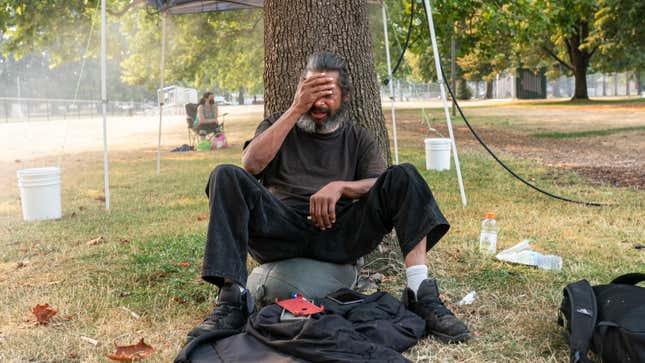
The record for hottest summer in the U.S. has stood since 1936, the worst of the Dust Bowl. But 2021 has eclipsed that 85-year-old mark amid a season of drought, flames, and suffering.
New data from the National Oceanic and Atmospheric Administration shows the average temperature across the Lower 48 this summer was 74.0 degrees Fahrenheit (23 degrees Celsius). That’s 2.6 degrees Fahrenheit (1.4 degrees Celsius) above the long-term average, a shade hotter than it was in the summer of 1936. NOAA diplomatically called it a “virtual tie,” and really when you’re measuring down to hundredths of a degree, fair.
The heat of the Dust Bowl has long been climate deniers’ favorite cherry-pick. Wade into any denier blog or Twitter thread and someone will inevitably say something along the lines of “durrrr Dust Bowl hottest summer ever, check and mate, libs. #MAGA.” Sadly, that talking point is now in the dustbin of history, though I’m sure they’ll find a way to move the goalposts.
For those of us living in the real world, this past summer was one straight from hell. While 74 degrees Fahrenheit sounds pleasant, nobody experiences the average temperature across 3.2 million square miles (8.1 million square kilometers) over a period of 92 days. Instead, millions of people across the U.S. were subjected to prolonged bouts of blistering heat that smashed records. The summer from hell began in the Northwest with all-time records falling, roasted California and the Southwest with repeated heat waves, including one that tied the all-time hottest temperature ever recorded anywhere on the planet.
The Northwest, in particular, dealt with triple-digit heat in June that led to what coroners called a “mass casualty event,” a term typically reserved for plane crashes and mass shootings. Wildfires also burned throughout the region and California, and the worst drought in 1,200 years got that much worse across much of the West.

The heat made life in other regions nearly as insufferable. Only the South was offered much of a reprieve from the heat, though it still had to contend with other climate disasters (and wasn’t spared from the heat entirely either). It wasn’t just that U.S. was an isolated hotspot either; the world saw its hottest month ever recorded in July as multiple regions baked, burned, and dried out.
Climate change has made heat more extreme, and this summer has reinforced that across the U.S. It serves as a warning that the world needs to heed the calls of scientists to reduce carbon pollution or suffer even more damage. The recent Intergovernmental Panel on Climate Change report warned that a 1-in-50-year extreme heat wave is now nearly five times more likely than it was if the world hadn’t spent the past century-plus burning fossil fuels. Even meeting the Paris Agreement goals would mean that level of heat would be nearly 14 times more likely. The disasters of this summer coupled with that finding show that cutting emissions is part of the work the world needs to put in this century. (A major part, of course.) We also urgently need to adapt to more heat or face even more destructive and deadly summers in the coming decades.